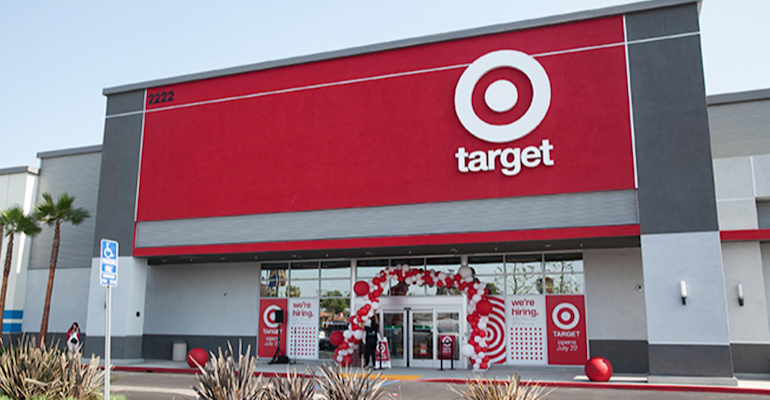Retail and restaurants may appear to be two very different industries with little in common, but they both share a common need to create positive customer experiences. The retail industry is ahead of restaurants in its use of technology. Amazon was a major force driving this change in the mid-2000s, as it created a digital-first consumer experience where it was possible to buy almost anything through its online store. As the restaurant industry continues its recovery from COVID, operators can learn some interesting lessons from the changes that retail stores went through.
Much like the restaurant industry, retail has also experienced significant shifts, both due to the pandemic and changing consumer shopping habits and expectations. The abrupt changes brought on by the pandemic forced retailers to find new ways to serve and reach their customers, and to reimagine the future of in-store experiences and face-to-face engagement with clientele. Retail brands were forced to adapt even more than they had in the past to a hybrid digital and physical experience for customers, for example, by offering “order ahead” combined with curbside pickup.
Here are three things that restaurants can learn from the retail industry.
Embrace contactless and contact-light technologies
Consumers have become adept at contact-light and contactless shopping, often shopping ahead via their phones and limiting their in-store interactions. They have also become conditioned to use contactless payment options like Apple Pay, Samsung Pay and Square, creating a comfortable and predictable checkout experience.
When it comes to the restaurant industry, contactless or contact-light diner experiences have room for improvement. At Yelp, we’ve seen restaurants, like San Diego’s Cafe 21, embrace our Yelp Guest Manager product to avoid the need for crowds of people around the host stand or standing in lines, as people can reserve ahead of time or join a waitlist remotely and be notified of updates from their home or car. Restaurants that are lucky enough to have front of house staff amid the industry’s ongoing labor shortage crisis have used technology to allow employees to focus on hospitality and provide a great customer experience.
Ultimately, consumers are looking for a consistent experience with businesses, whether they are dining on or off premises.
Reimagine your space
Increased traffic from takeout and curbside orders looks like a permanent fixture for most restaurants, rather than a temporary phenomenon, which means it’s time to reconsider the physical space of your restaurant and tackle potential bottlenecks. Redesigning future spaces and remodeling existing locations to adapt to new patterns of customer demand will eliminate congestion in both the front and back of house. Restaurants now need to consider how best to manage the flow of to-go orders leaving the restaurant, alongside the flow of diners entering the restaurant and expecting a hospitable dining experience.
Separating takeout and dine-in hostess stands may provide some relief for staff and diners. Investing in front of house solutions can also help manage all guest communication, whether for diners waiting to be seated or diners coming to pick up their meal, simplifying the communication process and reducing potential crowds.
Reconfiguring multiple locations is no easy feat, and can require an upfront cost. However, the investment could be worth it, especially for multi-location restaurants, such as chains or franchises.
Integrate loyalty into the guest’s digital experience
Loyalty programs aren’t exactly new to the restaurant or retail industries. Punch cards or plastic loyalty cards have long been proven to be an effective method to track visits and reward customers. For businesses, a digital loyalty program needs a consumer network along the way for the loyalty provider to easily connect with their customers and deliver an integrated consumer experience where a person’s loyalty status, for example, can be shared with everyone who interacts with the customer. In recent years, companies like Target, Starbucks and McDonald’s have reimagined loyalty for the smartphone era.
Modernizing the rewards program appeals to a customer’s desire for convenience and inspires loyalty. Brands like Sephora have even experimented with incorporating giveback programs, allowing consumers to donate to non-profit causes, within their loyalty programs, creating goodwill with customers.
Restaurants and retailers have struggled over the last two years following shutdown orders and unpredictable waves of COVID-19 affecting their business in ways they couldn’t have predicted. But both industries have found new ways to pivot, learn from each other and embrace technology to tackle the future.
AUTHOR BIO
 Anthony Cross is Vice President of Product, Restaurants at Yelp, where he's focused on helping restaurants manage their Front of House while leveraging the power of Yelp's diner network. Prior to Yelp, Anthony led Product and Marketing teams for several consumer and business-facing app and SaaS companies.
Anthony Cross is Vice President of Product, Restaurants at Yelp, where he's focused on helping restaurants manage their Front of House while leveraging the power of Yelp's diner network. Prior to Yelp, Anthony led Product and Marketing teams for several consumer and business-facing app and SaaS companies.

